October has ended, and while we walk forward in direction of 2022, you're probably looking for a way to recap the best smartphones that have been released this month so far. Perhaps, you're here just because you're an avid media consumer. So. you’re in the market looking for a device with good capabilities for consuming media, we are to serve you. we are here to bring a new edition of our “Top 10 smartphones for Media Consumption” listing. We’re reaching the end of the year, but there are a lot of new smartphones coming. So the year definitively still has a lot to offer. What stands right nows as the best offerings for media consumers?
For some users, media consumption is one of the reasons for pushing forward the smartphone market. Especially with the new standards created by the pandemic. People have been prioritizing isolation, over public meetings and some cases need to stay at home more often. Sometimes we just need to find ways to kill boredom. While the world is going back to its former "normal state" we know that some demands created amidst the pandemic will not leave our lives. We're pretty sure that the sector of multimedia has become much more powerful than it was ever before. So we need smartphones that will serve our needs without hassle.
In recent times, we’ve been passing countless hours watching movies through online video streaming or gaming services, we’ve been navigating through social media feeds or we’re playing games with our handsets to kill boredom. If you need a good smartphone for media consumption’s sake, then you will need to look at some important factors – Display, Battery Capacity, and certain aspects of the hardware. We hope that on this list, you will get the necessary help to get a good smartphone. Hopefully, any of these devices will meet your needs in this particular department. We’ve elaborated a list of the top 10 smartphones for media consumption you can get in October 2021.
TOP 10 SMARTPHONES FOR MEDIA CONSUMPTION – DISCLAIMER
The devices in the list are, in our opinion, the best devices for watching Netflix and other streaming platforms such as YouTube, Twitch, etc. Moreover, they also deliver great performance and are ideal for trending apps such as TikTok, Instagram, and even Clubhouse. They can also play demanding games without much stress. So if you’re needing a device that will meet all your “multimedia needs” check out our list with good recommendations. Take in mind that these are just the best 10 devices in our opinion. You can always have better options in your mind, so feel free to share your thoughts in the comments section. For the next month, there will be more options, and a new list with our best ten picks.
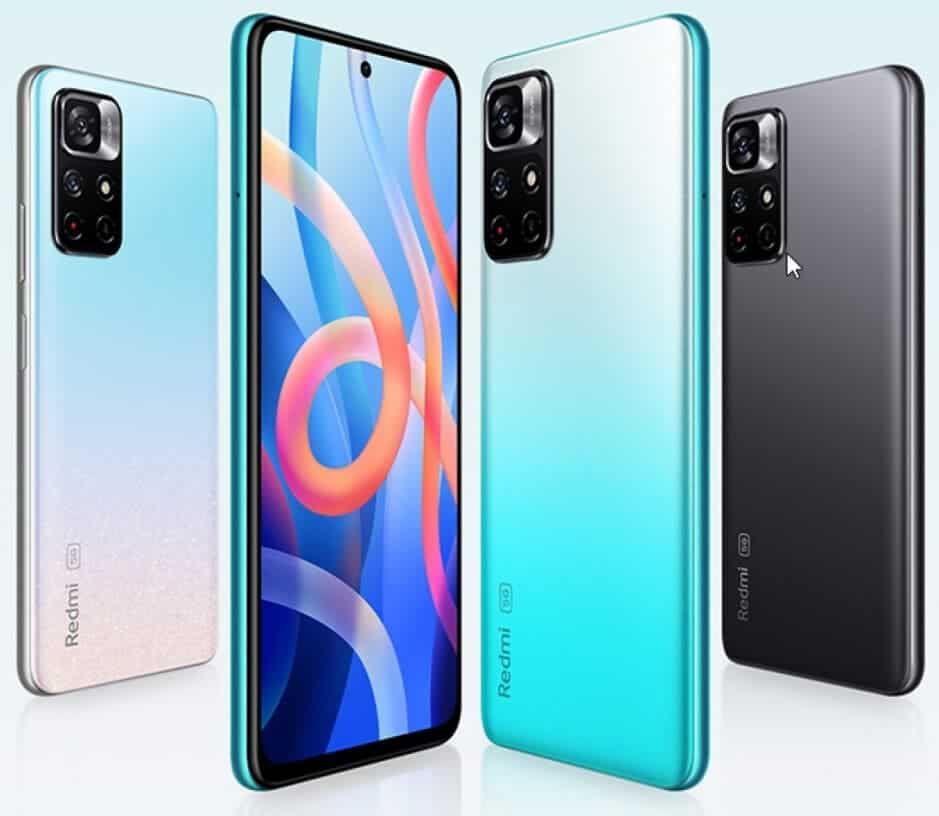
Redmi Note 11
We'll start our list with the Redmi Note 11 series, made of three smartphones - Redmi Note 11, Note 11 Pro, and Pro+. Here, we'll focus on the vanilla smartphone that starts this family. For many years, Redmi achieves the crown of one of Xiaomi's more popular smartphones series. The Redmi Note 11 was released only in China so far but will appear soon in more markets including India. The company, once again, brings stunning specifications that offer great value for money. Also, the device is a strong contender for the Top 10 Smartphones for Media Consumption list due to its hardware and capabilities. However, Redmi has made some compromises in this lineup that may not make all customers happy. Without further ado, let's see why this device is here.
The Redmi Note 11 is the vanilla variant for the series, and as a result, has the most basic specifications in the lineup. But this does not mean that the device isn't a capable one. It flaunts a gorgeous IPS LCD screen with 6.6-inch and a 20:9 aspect ratio. The screen comes with a Full HD+ resolution of 2,400 x 1,080 pixels and 399 pixels per inch density. The body of the handset is IP53 certified ensuring that will withstand dust and modest water splashes. The handset has dual SIM capabilities with dual-nano slots.
The Redmi Note 11 carries underhood a brand new MediaTek Dimensity 810 5G chipset. This processor has been recently unveiled by MediaTek for the 2021 market. It features an Octa-Core architecture based on the 6 nm TSMC fabrication process. It brings 2 x 2.4 GHz ARM Cortex-A76 cores plus six ARM Cortex-A55 cores clocked at up to 2.0 GHz.
The graphical tasks are ensured by a Mali-G57 GPU with two cores. The handsets come in variants with 4 GB of RAM and 128 GB of Internal Storage, 6 GB of RAM and 128 GB of Internal Storage, 8 GB of RAM and 128 GB of Internal Storage, and 8 GB of RAM with 256 GB of Storage. Unfortunately, this is the first Redmi Note smartphone since the days of the MediaTek-powered Redmi Note 3 to lack a micro SD card slot. So make sure that you'll be picking a larger variant if 128 GB isn't enough for you.
In terms of camera specifications, we have a Dual-Camera setup. That's right, Redmi is leaving the "multi-camera" approach with its vanilla smartphone. However, this isn't bad as the usual Quad-Camera combo included poor 2 MP cameras for depth sensing and macro footage. The dual-camera setup is enough to get the job done. The main camera is a 50 MP camera with a 26mm wide lens and PDAF autofocus. The secondary snapper is an 8 MP ultrawide module. It also features LED flash, HDR video recording, and panorama photo mode. For selfies and video calls, there is a 16 MP camera unit that sits at the top of the display in a center-aligned punch hole.
The Redmi Note 11 gets its Media prowess enhanced by true stereo speakers. These speakers are JBL tuned and have Dolby Atmos support as well as other high-quality audio certifications. Instead of the speaker + earpiece combo, Redmi has two true speakers - One at the top and another one at the bottom frame of the handset. These locations ensure that you'll never block the audio. The device also has a 3.5 mm headphone jack which is a plus in this world of portless smartphones. The device has Wi-Fi 6, Bluetooth 5.0 support, GPS with A-GPS, GLONASS, GALILEO, and BDS. It also comes with NFC, IR Blaster, and USB Type C port. The fingerprint scanner marks a presence in the power button.
The handset boasts a massive 5,000 mAh battery with 65 W fast charging. In terms of software, it runs Android 11-based MIUI 12.5 Enhanced straight out of the box. As usual, it's eligible for MIUI 13 and the Android 12 upgrade.

Redmi Note 11 Pro / 11 Pro+
The trend of Pro Plus smartphones that arrived last year with the Honor 30 Pro+ and absorbed all smartphone brands in China is entering the Redmi Note 11 series. Besides the usual Redmi Note 11 Pro, the Chinese brand also launched an 11 Pro+ variant in the country. However, there aren't big differences between the two variants apart from battery size and fast-charging capabilities. For that reason, we'll be putting these devices altogether and will disclose what are the differences.
The Redmi Note 11 Pro and its Plus sibling come with a 6.67-inch Super AMOLED display. That's a big difference from the vanilla variant that had only a common LCD. The OLED panel offers higher levels of brightness and also has a higher 120 Hz refresh rate. The display is covered with a layer of Corning Gorilla Glass 5 as well as the rear panel. The panel has a Full HD+ resolution of 2,400 x 1,080 pixels, resulting in a 20:9 aspect ratio and 395 pixels per inch density. Both devices have a center-aligned punch-hole.
Under the hood, we have another of MediaTek's 5G Dimensity chips for 2021. The Dimensity 920 5G sits above the Dimensity 810 but is way below the Dimensity 1200 in terms of performance. The system-on-chip is also based on the very efficient 6nm process from TSMC. It boasts two ARM Cortex-A78 cores clocked at up to 2.5 GHz plus six ARM Cortex-A55 cores clocked at up to 2.0 GHz. The chipset is powered by a powerful Mali-G68 GPU with four cores. Just like its sibling, there are plenty of variants - 6 GB of RAM with 128 GB storage, 8 GB of RAM with 128 GB Storage, and finally 8 GB of RAM with 256 GB Storage.
In terms of optics, the Redmi Note 11 and 11 Pro+ sport a Triple-camera system. It comes with a 108 MP camera with f/1.9 aperture, 26 mm, 1.152", and dual-pixel PDAF auto-focus. There is also an 8 MP ultrawide camera with 120 fields of view, and finally, a 2 MP telephoto macro with f/2.4 aperture and 50 mm. The module has LED flash and up to 1080@60 frames per second video recording. For selfies and video calls, both devices bring the very same 16 MP selfie snapper.
The handset also boasts stereo speakers tuned by JBL. Again, we have true stereo speakers and not the old earpiece + speaker trick. The experience will be more immersive thanks to Dolby Atmos and a series of advanced codecs to enhance media content. The handset also comes with a 3.5 mm headphone jack. In terms of connectivity, the Note 11 Pros come with dual-band Wi-Fi 6, Bluetooth 5.2 with A2DP and LE. There is also GPS with A-GPS, GLONASS, GALILEO, and BDS. The handset also has NFC and an Infrared Port. Of course, there is a USB Type-C port. Both devices run Android 11 with MIUI 12.5 straight out of the box. Also, Xiaomi is keeping the side-mounted fingerprint scanner despite the OLED display.
The two only differences between the Pro smartphones come in the battery and fast-charging departments. The Redmi Note 11 Pro comes with a huge 5,160 mAh battery with 67 W fast-charging support. The Redmi Note 11 Pro has a smaller battery with a 4,500 mAh battery, but despite this, has a faster-charging technology with whopping 120 W. Users will have the choice of having a blazing fast-charging or a larger battery. In my humble opinion, having a larger battery is better and 67 W is faster enough for it.
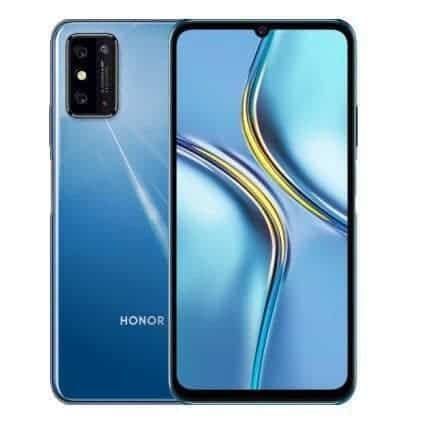
Honor X30 Max
Smartphones became large enough in recent years. So we have left the "Phablet" term behind as it was used to classify the smartphones between the 5.5-inch and 7-inch sizes. However, some companies want to make this word great again! Honor has launched a massive smartphone in the form of Honor X10 proving that there's is still a niche of users that want crazily big smartphones. This week, the brand announced the Honor X30 Max with a massive 7.09-inch display and affordable price.
I don't need to say that having a large and good screen is a strong factor for making a device relevant for media consumption. In this particular category, the Honor X30 Max gets the job done with a massive panel that is hard to dethrone. The phablet comes with a massive 7.09-inch IPS LCD screen with HDR 10 support. It has a good 84.7 percent screen-to-body ratio. It's a waterdrop notched panel with a Full HD+ resolution of 2,280 x 1,080 pixels, 19:9 aspect ratio, and 356 pixels pixel inch density. The device has a glass front, but it's not specified if there is any kind of protective coating. The side frame and back are made of plastic. This is a way to cut down the price of the handset.
Under the hood, the Honor X30 Max boasts a MediaTek Dimensity 900 5G SoC (2x2.4 GHz Cortex-A78 & 6x2.0 GHz Cortex-A55) and a Mali-G68 MC4 GPU. This GPU is capable and is one step behind the Dimensity 920 5G on the Note 11 Pro variants. The X30 Max is available in variants with 8 GB of RAM and 128 GB of Storage and 8 GB of RAM with 256 GB of Internal Storage. The device also lacks a micro SD card slot.
The camera setup is simple but should get the job done. Honor does not want to impress photography enthusiasts with this device here. It comes with a dual-camera setup with a primary 64 MP camera with f/1.8 aperture, 26 mm (wide), and PDAF autofocus. The camera supports up to 1080@30 fps video recording. The selfie snapper is an 8 MP camera with an f/2.0 aperture.
For multimedia purposes, the handset boasts dual stereo speakers and scouts with a 3.5 mm headphone jack. In terms of connectivity, it comes with Wi-Fi 5, GPS with A-GPS, GLONASS, and BDS. It offers NFC and charges via a USB Type-C port. The fingerprint scanner sits on the side and doubles as a power button. In terms of software, the Honor X30 Max offers Android 11 with Magic 5.0 UI on top. It comes with Google Play Services. The device draws its powers with a 5,000 mAh battery with 22.5W fast charging.
The Honor X30 Max comes as a smartphone for media consumers and gamers. It's a great device for watching movies and playing games. This was the goal of the handset as Honor hasn't been shy in cutting down some corners. The device certainly is one of the big launches of the year and deserves a place in the Top 10 Smartphones for Media Consumption.

iQOO Z5x
The iQOO Z5x is the latest device to come from Vivo's iQOO for the mid-range segment. The hardware-focused and cost-effective brand has a new contender that has a lot of pros. Therefore, it gets a place in the Top 10 Smartphones for Media Consumption of October 2021.
The iQOO Z5x flaunts a large display with 6.58-inches, an 84.5 percent screen-to-body ratio. It's an IPS LCD screen with a 120 Hz refresh rate and Full HD+ resolution with 2,408 x 1,080 pixels. The panel has a 20:9 aspect ratio and 401 pixels per inch density. There is no mention of any kind of protective glass coating.
Under the hood, this is another device to use the MediaTek Dimensity 900 5G chipset. So we don't need to further clarify the specs of this particular and powerful 5G chipset. As usual in 2021 smartphones, the handset has Android 11 with OriginOS 1.0 on top. It's a great chipset for games thanks to the Quad-Core GPU. The iQOO Z5x tries to democratize things by offering an entry-level variant with 6 GB of RAM and 128 GB of Storage. there is also a mid-tier option with 8 GB of RAM and 128 GB of Internal Storage. Finally, the high-tier version has 8 GB of RAM and 256 GB of Internal Storage.
In terms of optics, this is another smartphone leaving the multi-camera race behind. Instead, it comes with a single 50 MP camera with f/1.8 aperture and PDAF autofocus. The secondary snapper is a 2 MP unit with f/2.4 aperture and macro purpose. There is a limitation for 1080p video recording with 30 fps. The selfie snapper is an 8 MP camera with an f/2.0 aperture.
The handset has a single speaker and a 3.5 mm headphone jack. In terms of connectivity, it brings Wi-Fi 6, Bluetooth 5.2 with A2DP, LE, aptX HD, and GPS with A-GPS, GLONASS, GALILEO, BDS, and QZSS. It does not come with NFC but includes a USB C port. The package is fueled by a huge 5,000 mAh battery with a fast 44 W charging. The fingerprint is placed on the side of the handset.
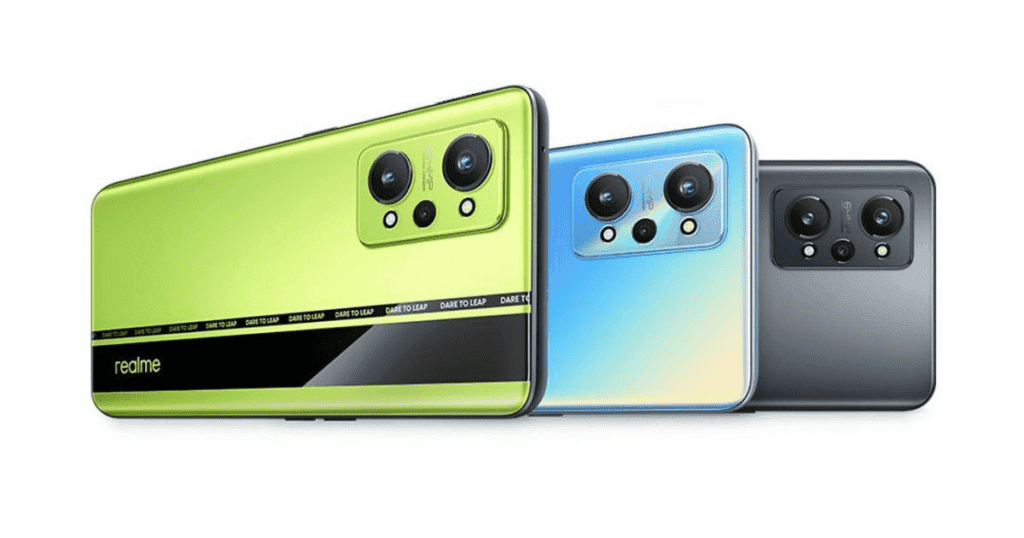
Realme GT Neo2
The next device on our list is, the Realme GT Neo2. If you saw last month's list, you'll notice that the device was there. However, we decided to bring it yet again for a very special reason. The device had been released in India in October. So, it's another reason for making it a relevant choice for our Top 10 Smartphones for Media Consumption.
The Realme GT Neo2 follows the formula of the Realme GT series bringing a stunning design and outstanding performance. This device also brings a green colorway that feels like the “green” version of Realme’s Racing Yellow colorway. The Realme GT Neo2 flaunts a 6.62-inch AMOLED display with a 120 Hz refresh rate, HDR 10+, and a peak brightness of 1,300 nits. The device has a Full HD+ resolution with 2,400 x 1,080 pixels and a 20:9 aspect ratio. The device has an 85.7 percent screen-to-body ratio and a punch-hole on the top left corner of the display. Worth noting that the panel is the largest so far for a Realme GT series smartphone.
Under the hood, the Realme GT Neo2 won’t disappoint with one of the best chipsets in the market. The device packs the Qualcomm Snapdragon 870 SoC which is also present in the Realme GT Master Explorer Edition. This is a powerful chipset made in the 7 nm with 1 x 3.2 GHz Kyro 585 core, 3 x 2.42 GHz Kyro 585 cores, and 4 x 1.80 GHz Kyro 585. The device runs with 8 GB of RAM, but there is also another variant with 12 GB of RAM. The device is available in variants with 128 GB of Internal Storage, and 256 GB of Internal Storage. Storage is UFS 3.1 and the RAM standard is LPDDR5. The device, unfortunately, lacks a microSD card slot, but no device in this series has it.
In terms of optics, the Realme GT Neo2 brings a triple camera setup that is pretty much on par with other GT series releases. For instance, it brings a 64 MP camera with an f/1.8 aperture, 26 mm lens, and PDAF. There is also an 8 MP ultrawide camera with f/2.3 aperture, 16mm lens, 119-degree field of view, and 1.12um pixel size. Finally, we have the third sensor which is a 2 MP camera with an f/2.4 aperture for macro footage. The device has an LED flash. For selfies and video calls, there is a 16 MP camera with f/2.5 aperture, 1.0um pixel size, and 26mm lens. This camera comes with Gyro-EIS and 1080@30fps video recording.
The Realme GT Neo2 comes with stereo speakers so you can have an immersive audio experience with this device. Unfortunately, it lacks a 3.5mm headphone jack, and this is a drop from other GT series smartphones. It comes with dual-band Wi-Fi 6, Bluetooth 5.1, A2DP, LE, and aptX HD. The device has a GPS with dual-band A-GPS, GLONASS, BDS, GALILEO, QZSS, and NavIC. Other features include a USB Type C port, NFC, and an in-display fingerprint scanner.
The GT Neo2 draws its powers from a massive 5,000 mAh battery. It’s the first device in the series to come with such battery capacity. It can charge fast via Realme’s signature 65 W fast-charging. The GT Neo2 runs Android 11 OS with Realme UI 2.0.
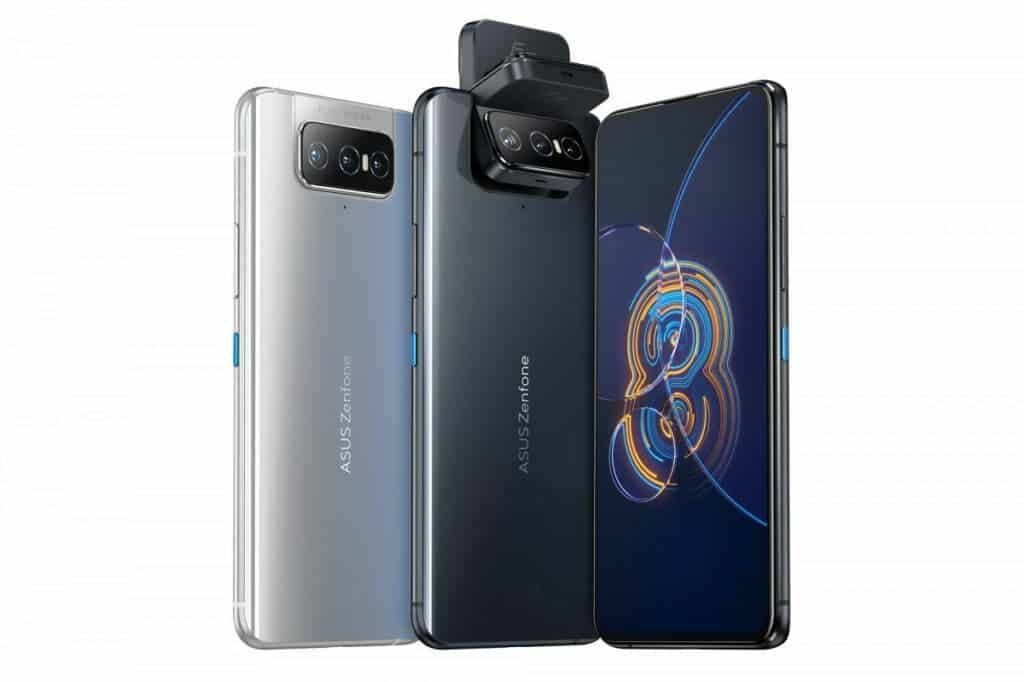
ZenFone 8 Flip
The next device in our Top 10 Smartphones for Media Consumption list is the ASUS ZenFone 8 Flip. The device comes with the design that had been the main choice in the 6 and 7 series. However, ASUS decided to launch a smaller handset with a traditional design and punch-hole display. So, the former design language now comes as a separate variant, the ASUS ZenFone 8 Flip. The device gets its name from the flipping camera mechanism, which allows the display to be truly bezel-less. A screen like this one makes this a relevant device for media consumption. Furthermore, the flagship specs make it an undisputed rival. The device is set to hit India soon, so let's what makes it a worthy contender.
The ASUS ZenFone 8 Flip comes with a true-bezel-less Super AMOLED display. It has a 6.67-inch diagonal with an 84.2 percent screen-to-body ratio. Moreover, it comes with a Full HD+ resolution and offers 1000 nits of peak brightness. This panel comes with Gorilla Glass 6 and has 395 pixels per inch density. It offers HDR 10+ support and is covered with Corning Gorilla Glass 6.
Under the hood, the ZenFone 8 Flip boasts Qualcomm Snapdragon 888 SoC with Adreno 660 SoC. The device comes in variants with 8 GB of RAM with 128 GB of Internal Storage, and 8 GB of RAM with 256 GB of Internal Storage. Interestingly, this is one of the few, if not the only flagship released in 2021 with a slot for micro SD cards. The device runs Android 11 with ZenUI 8 on top. According to the company's roadmap should end 2021 as one of the few third-party Android smartphones running Android 12.
In terms of optics, the ZenFone 8 Flip brings a flipping camera mechanism. It comprises a 64 MP camera with f/1.8 aperture and PDAF, an 8 MP telephoto module with f/2.4 aperture and 3x optical zoom, and a 12 MP ultrawide camera with f/2.2 aperture and dual-pixel PDAF. The device offers up to 8K video recording with 30 fps. The best part is that you can easily make this the selfie camera setup with the flipping mechanism. The device does not have a dedicated selfie camera, so you'll just need to flip the camera to get this main module on the front of the device.
The device has stereo speakers but lacks a 3.5 mm headphone jack. In terms of connectivity, it has Wi-Fi 6, Bluetooth 5.2 with A2DP, aptX HD. The device has GPS with GLONASS, GALILEO, QZSS, NavIC, BDS, NFC, and USB type C port. The fingerprint scanner goes inside the display. The ZenFone 8 Flip draws its powers from a 5,000 mAh battery with 30W fast charging.
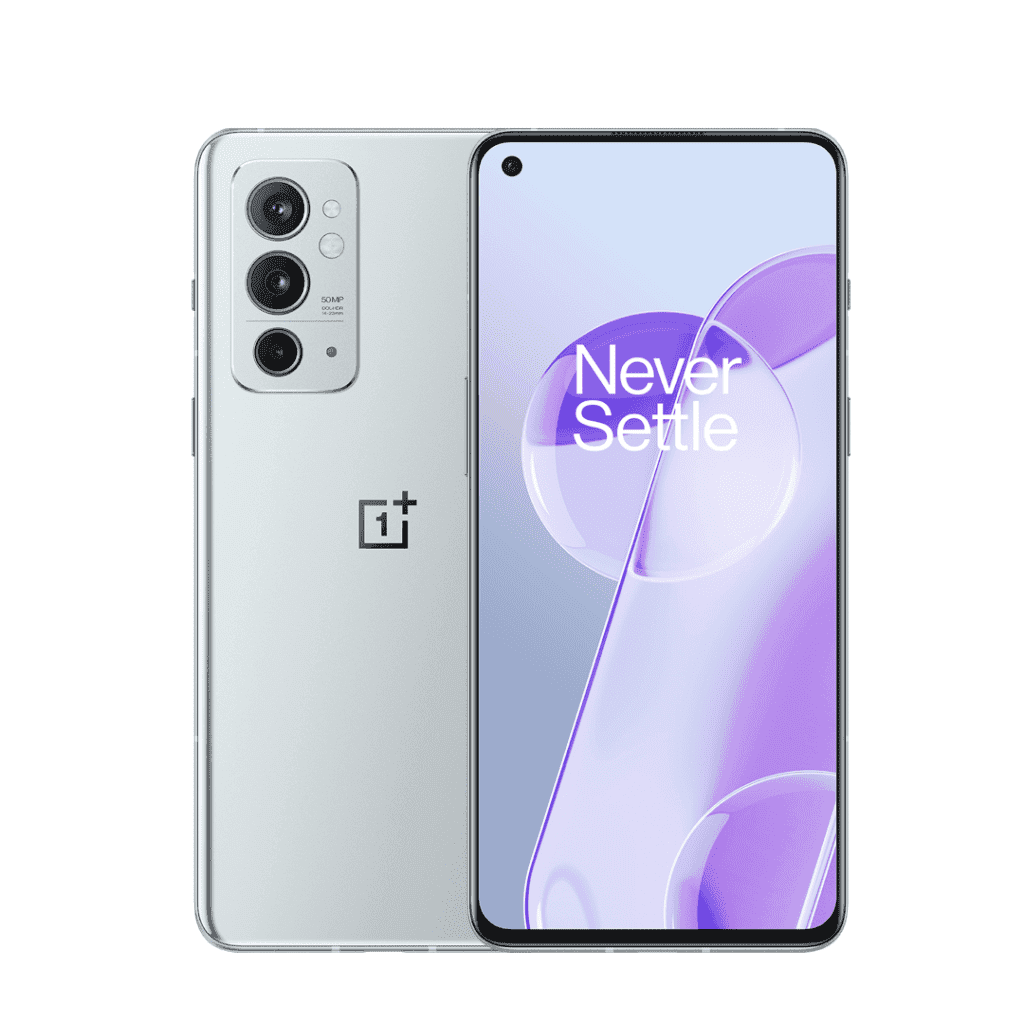
OnePlus 9RT
This month OnePlus launched the OnePlus 9RT as the only T-series smartphone of 2021. The device is a respectable upgrade and has enough resources to deserve a place in the list of Top 10 smartphones for media consumption.
The OnePlus 9R arrives as a revamped OnePlus 8T featuring a Qualcomm Snapdragon 870 instead of the 865. Despite this, the device had the same screen, same camera, and also the same battery. The OnePlus 9RT brings more changes, and some of them are significant.
The OnePlus 9RT brings a larger 6.62-inch display, that leaves its predecessor’s 6.55-inch panel behind. The panel is a Samsung E4 AMOLED panel with 2,400 x 1,080 pixels of resolution and a 20:9 aspect ratio. Moreover, it offers supports HDR 10+ and features sRGB and P3 color modes. Lastly, the screen offers a 120 Hz of refresh rate and a 600 Hz touch sampling rate for instant reactions. The device also comes with 4D haptic feedback to enhance gaming and three Wi-Fi antennas.
Under the hood, the handset brings a respectable upgrade with the Snapdragon 888 SoC. Its predecessor came with the 7 nm-based Snapdragon 870, which is still a super-powerful flagship processor but falls behind the 5 nm-based SD888. The device comes with 8 GB or 12 GB of LPDDR5 RAM along with 128 GB or 256 GB of UFS 3.1 storage.
The device has a 50 MP main camera which uses the same Sony IMX766 sensor as the 9 and 9 Pro. It’s a 1/1.56″ sensor with modern goodies like DOL-HDR and a bright f/1.8 aperture and can be binned 4 into 1. It also has Optical Image Stabilization but lacks 8K video recording. The secondary camera is a 16 MP snapper with an f/2.2 lens. There is also a 2 MP macro camera. In the front-facing department, there is a 16 MP IMX571 sensor with f/2.4 aperture and 1080p video recording.
On the battery front, we have the same 4,500 mAh two-cell battery with 65W fast-charging support. The device has a USB-C port with just a USB 2.0 data transfer. The device has an in-display fingerprint scanner, and there are stereo speakers with Dolby Atmos on board. It also comes with 5G, Wi-Fi 6, Bluetooth 5.2 with LDAC and AAC codecs, and NFC. The handset runs Android 11-based OxygenOS 11 but will get an update to Android 12 in the future.
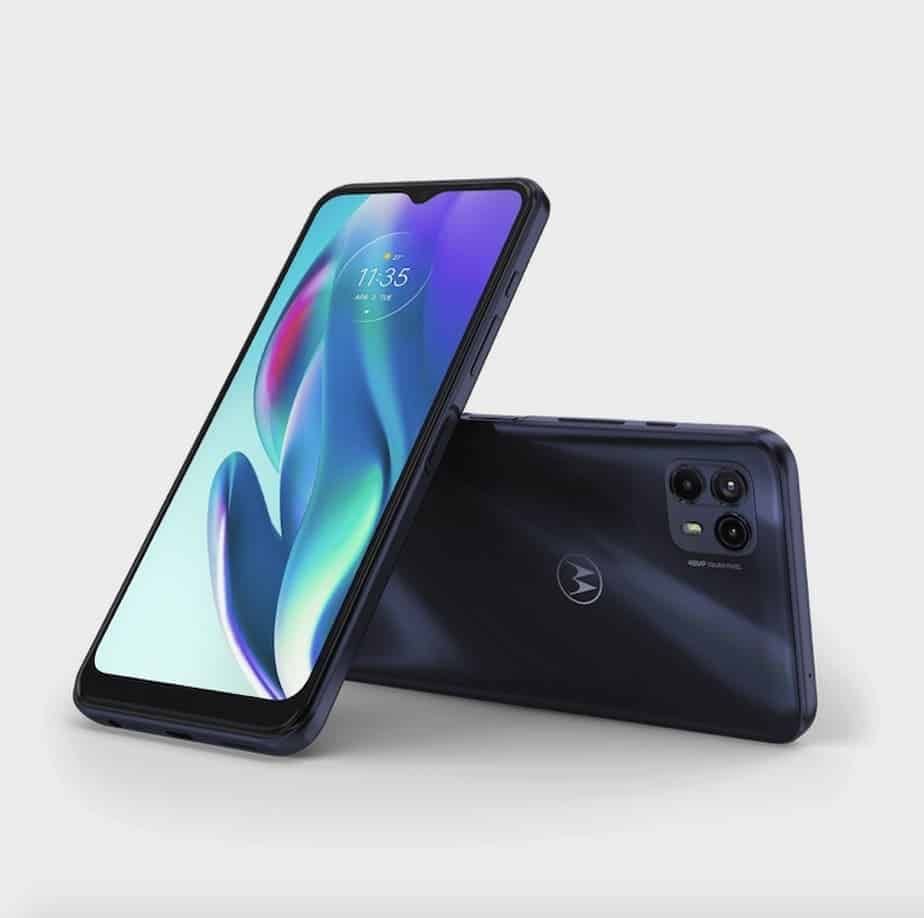
Moto G50 5G
The next device on our list is the global variant of the Moto G50 5G. Of course, the device isn't the flagship or a premium mid-range as other devices in this list. However, it gets the job done when it comes to media consumption. Also, those who can't pay the price of a flagship need a solid device. Therefore, it takes its place in the top 10 smartphones for media consumption.
The Moto G50 5G is a modest smartphone but comes with a water-repellent design. The screen is a common IPS LCD with an HD+ resolution of 1,600 x 720 pixels and 269 pixels per inch density. The display has a 6.5-inch diagonal with a 20:9 aspect ratio and a waterdrop notch design. Under the hood, the device boasts the MediaTek Dimensity 700 5G SoC with a 7 nm fabrication process. The device has a sole variant with 4 GB of RAM and 128 GB of Internal Storage.
The camera department has a 48 MP camera with f/1.7 aperture, PDAF, and 26mm. There are two 2 MP f/2.4 cameras for macro and depth sensing. The selfie snapper is a 13 MP camera with an f/2.0 wide aperture.
The Moto G50 5G has Wi-Fi 5, Bluetooth 5.0 with A2DP, LE, and GPS with A-GPS specifications. The device has NFC and USB Type C ports. The handset draws its powers from a 5,000 mAh battery with 15W charging. It supports microSD card expansion, has a 3.5 mm headphone jack and a single speaker.

Realme Q3s
The next device to join the Top 10 smartphones for media consumption list is the Realme Q3s. This device is available only in China for now, but we may see it reaching other markets soon, even with a different name. The device has very good specifications and value and for that reason deserves a place in the Top 10 Smartphones for Media Consumption.
The Realme Q3s comes with a gorgeous IPS LCD screen with a 144 Hz refresh rate. This is one of the few mid-range smartphones to come with such a high refresh rate. It has a 6.6-inch diagonal with 2,412 x 1,080 (Full HD+) resolution, 20:9 aspect ratio, and 401 ppi density. The display has a top-left aligned punch-hole just like almost every Realme smartphone.
Under the hood, the handset carries the Qualcomm Snapdragon 778G 5G processor which is one of the best chipsets released by Qualcomm for the 5G mid-range segment. It is paired with a powerful Adreno 642L GPU that can handle intense games without any hassle. The device comes in variants with 6 GB of RAM and 128 GB of storage, 8 GB of RAM with 128 GB of storage, and 8 GB of RAM with 256 GB of Internal Storage. As a good mid-range smartphone, it keeps the microSDXC slot.
In terms of optics, the device has a 48 MP camera with f/1.8 aperture and PDAF, and two 2 MP f/2.4 cameras for macro and depth. The handset also has a 16 MP snapper with an f/2.1 aperture for selfies and video calls. It has a single loudspeaker and a 3.5 mm headphone jack.
The Realme Q3s has Wi-Fi 6, Bluetooth 5.2, GPS with A-GPS, GLONASS, BDS, GALILEO, QZS. It lacks an NFC but includes a side-mounted fingerprint scanner and a USB Type C port. The handset draws its powers from a 5,000 mAh battery with 30W fast charging.
In terms of software, it runs Realme UI 2.0 based on Android 11 but should receive Android 12 and Realme UI 3.0 in the next year.

Pixel 6 Pro
The last device in our Top 10 Smartphones for Media Consumption is a special case. It's not every day that we get a Pixel smartphone on this list, but Google has finally put enough specifications into this handset to make it a strong contender for the Top 10 Smartphones for Media Consumption. The Pixel 6 Pro finally has a cutting-edge display, and also finally has a big-enough battery.
The Pixel 6 Pro flaunts a 6.71-inch LTPO AMOLED display with a 120 Hz refresh rate and HDR10+. It also has an 88.8 percent screen-to-body ratio, with a Quad HD+ resolution of 3,120 x 1,440 pixels. The device gets Corning Gorilla Glass Victus Coating and has Always-On Display.
Under the hood, the device has a Google Tensor chipset with 5nm architecture. This proprietary chipset has a powerful Mali-G78 MP20 GPU for intense gaming. The device has 12 GB of RAM with 128GB, 256 GB, and even 512 GB of Internal Storage. As usual, the lineup lacks UFS 3.1 storage.
In terms of optics, the device has a 50 MP camera with omnidirectional PDAF, Laser AF, OIS. 48 MP telephoto with f/3.5 aperture OIS, and 12 MP ultrawide camera with f/2.2 aperture. For selfies and video calls, there is an 11.1 MP selfie snapper.
The handset has stereo speakers, lacks microSD. It comes with Wi-Fi 6e, Bluetooth 5.2, GPS, and USB Type-C 3.1. The handset draws powers from a 5,003 mAh battery with 30 W fast charging. The handset has an under-display fingerprint scanner and has Ultra Wideband. This is and the Pixel 6 are the only devices with Android 12.
TOP 10 SMARTPHONES FOR MEDIA CONSUMPTION – CONCLUSION
And that is our September list of top 10 smartphones for media consumption. Do you have a particular device in mind to add to this list? Feel free to leave it in the comments section. In the next month, we will be bringing the next batch of better devices for consuming media and exploring social media applications as well as playing games! Be ready. Feel free to check our September list if you want more options, we’ll be back in the next month!
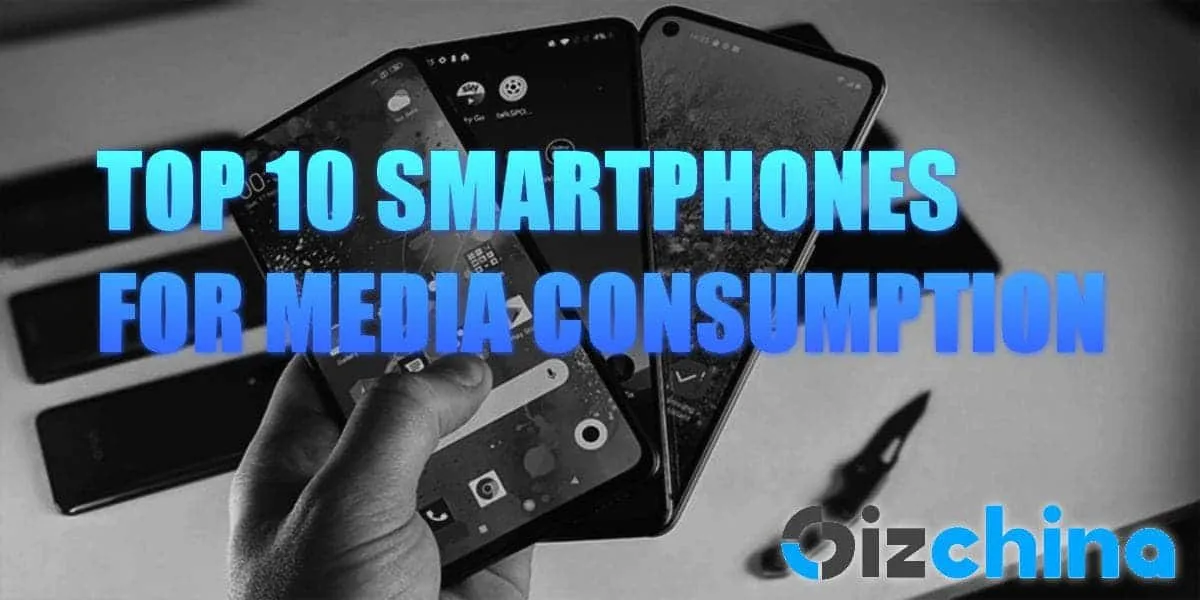





Place comments
0 Comments
You are currently seeing only the comments you are notified about, if you want to see all comments from this post, click the button below.
Show all comments